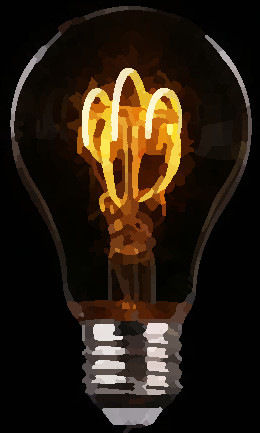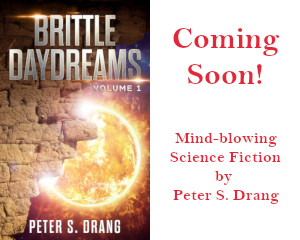
To write a science fiction or fantasy story, you need ideas. To write a lot of stories, you need a lot of ideas. I get solid ideas every week, and there’s a method to my madness.
How do you keep science fiction story ideas flowing? In this post I’ll describe one major screwdriver in my idea-generating toolbox: dreams.
The Main Story Driver: Character or Idea/Premise?
Before we get to that, let’s talk about what constitutes a story idea.
There are different ways to conceive a story. Two common ways are character-driven and idea- or premise-driven stories. (There are also action driven stories but I’ll lump those under idea/premise).
In a character driven story, the author designs an interesting character with motivations, desires, and a history, then finds a plot that forces that character to make tough choices under difficult circumstances.
Other stories are idea driven. There is some premise (what if dogs could talk?) and the story evolves from the premise. Characters are designed who will show off the premise (in the talking dogs example: a dog hater, a dog lover, a veterinarian, etc.) and a plot is designed to force those characters to deal with the premise.
For me, science fiction is the fiction of ideas. My stories are almost always idea driven, meaning I start with a premise. That doesn’t mean I give my characters short shrift. It means I start with the premise and the characters come afterward.
Even if you subscribe mainly to the character-comes-first theory, your dreams may be a useful source of characters, or of situations to help put your characters through the wringer.
Great, So Where Do These Mystical Premises Come From?
For me, premises come from a few main sources:
- Dreams
- Common everyday occurrences that are amped up to an extreme level
- Synthesizing stories I’ve read from one or more authors and trying to cast those ideas in a very different light, or add to them
- Forced idea generation exercises
This post will only cover the first of these, dreams.
Dreams
This is a big source for me, and it’s one reason I’ve named my story ebook series Brittle Daydreams. I dream frequently, and I remember many of my dreams. I am also a lucid dreamer, meaning that sometimes I realize I am dreaming while dreaming, and can then control the dream consciously (a couple times a week these days, but in my youth almost every night). But this skill is not necessary to use the techniques I’ll describe here.
I’m not saying that the entire story pops fully formed out of the dream. That has happened, but it’s not common for me (maybe once a year). There are times when an entire opening paragraph happens in a dream, a few times a year. But more commonly the dream merely provides a single image, a single piece of action, or a mood for a story.
For example, my story “Seven Skulls and Seven Fingers” came from several dreams combined. In one dream, I saw snow rolling down a hill forming balls, and when I looked closer the snowballs were actually skulls. To me that was a powerful image, and I built a story around it. In another dream, I had a conversation with my deceased father, and during the dream I of course did not realize he was dead (I was not lucid in this particular dream). So I thought about that concept: that you can meet dead people in your dreams, and combined it with the image of the skulls.
(This story is currently out in the market so I cannot post it yet, sorry! Maybe later this year.)
Making Yourself Dream
What if you don’t commonly dream, or don’t recall your dreams? I find you can train yourself to dream.
Technique 1: I dream far more often if I eat a small piece of chocolate right before bed. I’m talking about a little piece, like one Hershey’s Kiss or a tablespoon of chocolate chips. This probably works by inducing a small amount of indigestion! But that doesn’t matter to me, what matters is the result: new ideas.
Technique 2: As you lay in bed falling asleep, repeat to yourself ten times: “I will dream a story idea tonight and I’ll remember it.” This kind of repetition of a desire right before sleeping is a message to your subconscious that it will often heed. If it doesn’t work the first time, keep it up. Do it every day for a month, the message will sink in. (This technique is well known to lucid dreamers.)
Technique 3: Sleep a little later when you can. By late, I mean maybe 8:30am. Why? It’s well known that lucid dreams are much more common in the early morning hours, for an hour or two after sunrise. Even if you don’t lucid dream, you will be far more likely to recall normal dreams that happen early in the morning rather than the middle of the night.
You can also sometimes continue a dream after waking. If you wake up during a good story dream, do not move a single muscle and do not open your eyes. Repeat the images and ideas of the dream to yourself, then let yourself fall back asleep without moving. It’s important not to move. A fairly good percentage of the time the same dream will resume, but only if you do not move.
(I don’t know the precise reason for this, but I suspect your body position encodes a state that the subconscious uses to orient your dream body versus your physical body, and if you maintain the position of your physical body then your dream body may resume the dream in the prior state. These type of effects are also well known to the lucid dreaming community.)
Recording Your Dream Ideas
Of course, once you get an idea from a dream, you need to write it down. Dreams fade from memory quickly.
But you can make it more likely that you’ll recall your dreams. If you wake up with a dream in your mind, lay still for a moment, keep your eyes closed, and repeat the images and actions you saw in the dream several times. This will help keep it in your mind until you can write it down. Many authors and inventors keep a pad right next to their bed so they don’t lose these gems. You could even just jot a quick email to yourself on a smartphone or use an app for taking short notes. If you sleep without a partner, you could even use a voice recording app to blurt out a few sentences, then transcribe later.
Record everything, even if it’s not a full idea or a full story, it might be a nugget you can interweave with other ideas.
My notes are extremely terse, here are a few from my ideas file that ended up turning into stories:
- A lonely man sees snowballs rolling down a hill, they’re skulls. (Seven Skulls and Seven Fingers, out to market)
- An action park has rides that are deadly, people ride to bid for new organs. (Harvest Park, published 2005).
- A beam of light reverses quantum wave collapse. (Cat Comforts Dying Monkey, out to market).
Turning Ideas into Full Stories
The good news is, this method can help you fill up a file with premises. The bad news is, there’s a lot more work to do to turn those premises into stories! You need characters and a plot that combine to show off the premise.
Future posts and author’s notes for posted stories will delve into these important steps in the process in the coming weeks. Stay tuned!
SEE ALSO: Turning Everyday Life into Science Fiction Short Story Ideas



Pingback: Mixing Ingredients to Create New Science Fiction Stories — DrangStories.com
Pingback: Turning Everyday Life into Science Fiction Story Ideas — DrangStories.com